by Bill Dedman
Investigative reporter msnbc.com
5/9/2007
NOTICE: THIS WORK MAY BE PROTECTED BY COPYRIGHT
YOU ARE REQUIRED TO READ THE COPYRIGHT NOTICE AT THIS LINK BEFORE YOU READ THE FOLLOWING WORK, THAT IS AVAILABLE SOLELY FOR PRIVATE STUDY, SCHOLARSHIP OR RESEARCH PURSUANT TO 17 U.S.C. SECTION 107 AND 108. IN THE EVENT THAT THE LIBRARY DETERMINES THAT UNLAWFUL COPYING OF THIS WORK HAS OCCURRED, THE LIBRARY HAS THE RIGHT TO BLOCK THE I.P. ADDRESS AT WHICH THE UNLAWFUL COPYING APPEARED TO HAVE OCCURRED. THANK YOU FOR RESPECTING THE RIGHTS OF COPYRIGHT OWNERS.
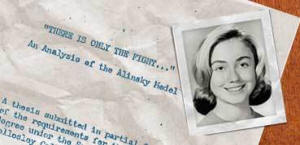
Hillary Rodham in 1965, when she was president of Wellesley College's Young Republicans, shown here with the cover page of her senior thesis from 1969 on radical organizer Saul D. Alinsky.
WELLESLEY, Mass. — The senior thesis of Hillary D. Rodham, Wellesley College class of 1969, has been speculated about, spun, analyzed, debated, criticized and defended. But rarely has it been read, because for the eight years of Bill Clinton’s presidency it was locked away.
As forbidden fruit, the writings of a 21-year-old college senior, examining the tactics of radical community organizer Saul D. Alinsky, have gained mythic status among her critics — a “Rosetta Stone,” in the words of one, that would allow readers to decode the thinking of the former first lady and 2008 presidential candidate.
Despite the fervent interest in the thesis, few realize that it is no longer kept under lock and key. As MSNBC.com found, it is available to anyone who visits the archive room of the prestigious women’s college outside Boston. With Clinton’s opponents in the 2008 presidential race looking for the next “Swift Boat” attack ad, and the senator herself trying to cast off her liberal image, Clinton's 92-page thesis is certain to be read and reread by opposition researchers and reporters visiting the campus.
But can an academic paper from nearly 40 years ago really unlock the politics and character of any former student, much less the early Democratic front-runner for the White House?
This is your chance to decide before the political spin machines get their hands on it.
Before reading Hillary Rodham's assessment of the old radical from Chicago — Alinsky's “compelling personality,” “his exceptional charm,” and the limitations of his “anachronistic” tactics — it’s important to understand how the document was sealed and how it has been portrayed.
Just as conservative authors have speculated, it was the Clintons who asked Wellesley in 1993 to hide Hillary Rodham's senior thesis from the first generation of Clinton biographers, according to her thesis adviser and friend, professor Alan H. Schechter, who describes taking the call from the White House. [See sidebar: "A stupid political decision." ]
Wellesley's president, Nannerl Overholser Keohane, approved a broad rule with a specific application: The senior thesis of every Wellesley alumna is available in the college archives for anyone to read -- except for those written by either a "president or first lady of the United States."
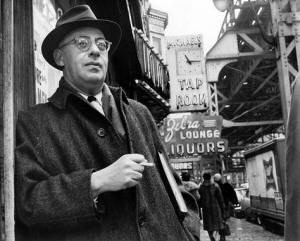
Saul Alinsky in Chicago's Woodlawn neighborhood in 1966. Hillary D. Rodham noted his "exceptional charm" but questioned his effectiveness.
So far, that action has sealed precisely one document: Hillary Rodham’s senior honors thesis in political science, entitled " ‘There Is Only the Fight...’: An Analysis of the Alinsky Model."
‘Alinsky's daughter’
Many authors on the long shelf of unsympathetic Clinton biographies have envisioned the thesis as evidence of Marxist or socialist views held by young Hillary — or conversely as proof of her political agnosticism, a lack of any ideology besides a brutal willingness to attack opponents and accumulate power in the Alinsky style.
David Brock, in his 1996 biography, "The Seduction of Hillary Rodham," called her "Alinsky's daughter."

The late Barbara Olson, author of "Hell to Pay"
Barbara Olson, the conservative lawyer and commentator, used an Alinsky quote to open every chapter of her 1999 book, "Hell to Pay: The Unfolding Story of Hillary Rodham Clinton." Olson, who died in the Sept. 11 terror attacks, had charged in her book that the thesis was locked away because Clinton "does not want the American people to know the extent to which she internalized and assimilated the beliefs and methods of Saul Alinsky."
Under Wellesley's rule, Clinton's thesis became available to researchers again when the Clintons left the White House in 2001 — available only to those who visit the Wellesley archives. But few have made the trip, and the document's allure continued to grow.
A purloined copy was offered for sale on eBay in 2001, then withdrawn when Clinton's staff cited copyright law.
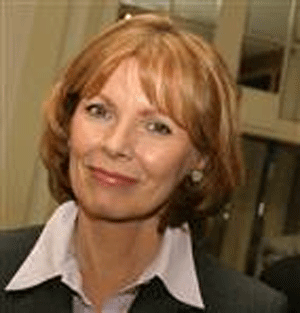
Peggy Noonan, co-author of "The Case Against Hillary Clinton"
Bill O'Reilly waved a few pages on Fox TV in 2003, chiding Wellesley for hiding Clinton's analysis of a "far left" activist.
Peggy Noonan, the former Reagan speechwriter writing in The Wall Street Journal in 2005, decried the continued suppression of "the Rosetta Stone of Hillary studies."
Just last month, an anonymous commentator lamented on the conservative Web site Free Republic, "She's a Marxist. Saul Alinsky's student. I sure wish we could unearth that sealed thesis of hers that she wrote at Wellesley."
No appointment is necessary for such spade work. A visitor to the Wellesley campus is buzzed in to the wood-paneled archives, but only after storing coat and briefcase in a locker outside. Pencils are allowed for note taking — no pens, which might mar the document. Readers can copy only a few pages.
The Wellesley archivist, Wilma R. Slaight, respectfully presents a photocopy of the typewritten manuscript in a black binder, cushioning it on green foam pads so as not to stress the leather.
"Democracy is still a radical idea"
The confident young student took her thesis title — “There Is Only the Fight...” — from T.S. Eliot:
"There is only the fight to recover what has been lost and found and lost again and again."
She began with a feminist jab at the clichés of male authors: "Although I have no ‘loving wife’ to thank for keeping the children away while I wrote, I do have many friends and teachers who have contributed to the process of thesis-writing.” She thanks particularly “Mr. Alinsky for providing a topic, sharing his time and offering me a job.”
Hillary Diane Rodham already had covered a great deal of ideological territory when she sat down to assess Alinsky's tactics.
She grew up as a Goldwater Republican, like her father, in the middle-class Chicago suburb of Park Ridge. By the time she was a freshman at Wellesley, when she was elected president of the College Republicans, her concern with civil rights and the war in Vietnam put her closer to the moderate-liberal wing of the GOP led by Nelson Rockefeller. By her junior year, she had to be talked by her professor into taking an internship with Rep. Gerald R. Ford and the House Republican Caucus. In her senior year, she was campaigning for the anti-war Democrat Eugene McCarthy.
"I sometimes think that I didn't leave the Republican Party," she has written, "as much as it left me."
Conservative Democrats begin a series of nearly 100 meetings held at the home of Pam Harriman to plot strategy for the takeover of the Democratic Party. Donors cough up $1,000 to attend and Harriman eventually raises $12 million for her kind of Democrat. The right-wing Dems will eventually settle on Bill Clinton as their presidential choice.
-- Arkansas Connections, by Sam Smith
Elected president of the Wellesley student government, she worked closely with the administration to increase black enrollment, to relax rules on curfews for the Wellesley girls and to give students more freedom in choosing their courses.
Saul David Alinsky would have thought that tame stuff. The old Jewish radical was famous as a community organizer from Chicago's Back of the Yards, the home of stockyard workers made famous by Upton Sinclair's "The Jungle." From the late 1930s until his death in 1972, Alinsky crisscrossed the country, stirring the have-nots — poor whites and blacks — to demand power from the haves.
The hell-raiser's witty provocations were famous. One of his threatened “actions,” to unsettle the upper-crust audience at the Rochester symphony, was to have protesters buy 300 to 400 tickets, but first to gather for a big baked-bean dinner. He called the idea a "fart-in." It never happened, according to biographer Sanford D. Horwitt, though Alinsky loved to tell the story as if it had.
But Alinsky was no mere showman. He was a sometimes brutal seeker of power for others, schooling radicals with maxims such as "Pick the target, freeze it, personalize it and polarize it."
A Methodist field trip
The teenage Rodham and the 60-year-old Alinsky met, of all places, on a Methodist church outing. Her youth minister, Don Jones, was introducing the youth of white, comfortable Park Ridge to social action. His "University of Life" took them to poor black and Hispanic churches, to hear Martin Luther King and to meet Alinsky.
When Rodham returned to Wellesley for her senior year and began scouting for a topic for her honors thesis, professor Schechter suggested she look up Alinsky again. She interviewed him in Chicago, in Boston and when he accepted her invitation to visit Wellesley.
Rodham opened the thesis by casting Alinsky as he cast himself, in a “peculiarly American” tradition of democrats, from Thomas Paine through Martin Luther King. “Democracy is still a radical idea,” she wrote, “in a world where we often confuse images with realities, words with actions.”
And yet, she continued, “Much of what Alinsky professes does not sound ‘radical.’ His are the words used in our schools and churches, by our parents and their friends, by our peers. The difference is that Alinsky really believes in them and recognizes the necessity of changing the present structures of our lives in order to realize them.”
Although some Clinton biographers have been quick to label Alinsky a communist, he maintained that he never joined the Communist Party. “I've never joined any organization — not even the ones I've organized myself,” he said in a 1972 interview with Playboy magazine. He said he was happy to work with anyone — the Roman Catholic Church, black Protestants, the communists — whoever would invite him into a neighborhood.
Looking back at the 1930s, he said, “Anybody who tells you he was active in progressive causes in those days and never worked with the Reds is a goddamn liar. Their platform stood for all the right things, and unlike many liberals, they were willing to put their bodies on the line.”
‘A man of exceptional charm’
Rodham’s thesis describes trying to pin him down on his personal philosophy: “Alinsky, cringing at the use of labels, ruefully admitted that he might be called an existentialist,” she wrote. Rodham tried to ask him about his moral relativism — particular ends, he said, often do justify the means — but Alinsky would only concede that “idealism can parallel self-interest.”
In her paper, she accepted Alinsky's view that the problem of the poor isn't so much a lack of money as a lack of power, as well as his view of federal anti-poverty programs as ineffective. (To Alinsky, the War on Poverty was a “prize piece of political pornography,” even though some of its funds flowed through his organizations.) “A cycle of dependency has been created,” she wrote, “which ensnares its victims into resignation and apathy.”
In formal academic language, Rodham offered a “perspective” or muted critique on Alinsky's methods, sometimes leaving unclear whether she was quoting his critics or stating her own opinion. She cited scholars who claimed that Alinsky's small gains actually delayed attainment of bigger goals for the poor and minorities.
In criticizing the “few material gains” that Alinsky engineered — such as pressing Kodak Co. to hire blacks in Rochester, or delaying the University of Chicago's expansion into the Woodlawn neighborhood — Rodham placed part of the blame on demography, the diminishing role of neighborhoods in American life. Another part she laid charitably to an Alinsky character trait: “One of the primary problems of the Alinsky model is that the removal of Alinsky dramatically alters its composition," she wrote. "Alinsky is a born organizer who is not easily duplicated, but, in addition to his skill, he is a man of exceptional charm."
‘The most radical of political faiths’
In the end, she judged that Alinsky's “power/conflict model is rendered inapplicable by existing social conflicts” — overriding national issues such as racial tension and segregation. Alinsky had no success in forming an effective national movement, she said, referring dismissively to “the anachronistic nature of small autonomous conflict.”
Putting Alinsky's Rochester symphony threat into academic language, Rodham found that the conflict approach to power is limited. “Alinsky's conclusion that the ‘ventilation’ of hostilities is healthy in certain situations is valid, but across-the-board ‘social catharsis’ cannot be prescribed,” she wrote.
She noted, however, that he was trying to broaden his reach: In 1969, Alinsky was developing an institute in Chicago at his Industrial Areas Foundation, aimed at training organizers to galvanize a surprising target: the middle class. That was the job he offered to Hillary Rodham.
Though some student activists of the 1960s may have idolized Alinsky, he didn't particularly idolize them. At the time Hillary Rodham brought him to Wellesley in January 1969 to speak at a private dinner for a dozen students, he was expressing dissatisfaction with New Left protesters such as the Students for a Democratic Society. One of his criticisms, surprisingly, was their tactical mistake of rejecting middle-class values.
Rodham closed her thesis by emphasizing that she reserved a place for Alinsky in the pantheon of social action — seated next to Martin Luther King, the poet-humanist Walt Whitman, and Eugene Debs, the labor leader now best remembered as the five-time Socialist Party candidate for president.
“In spite of his being featured in the Sunday New York Times," she wrote of Alinsky, "and living a comfortable, expenses-paid life, he considers himself a revolutionary. In a very important way he is. If the ideals Alinsky espouses were actualized, the result would be social revolution. Ironically, this is not a disjunctive projection if considered in the tradition of Western democratic theory. In the first chapter it was pointed out that Alinsky is regarded by many as the proponent of a dangerous socio/political philosophy. As such, he has been feared — just as Eugene Debs or Walt Whitman or Martin Luther King has been feared, because each embraced the most radical of political faiths — democracy.”
‘A fundamental disagreement’
Hillary Rodham (who wasn't the valedictorian of the Wellesley class of '69, no matter what Wikipedia has said since July 9, 2005) was indeed an honors student and received an A on the thesis after her oral defense of it that May, recalls professor Schechter, who was one of the three graders.
Later that month she became nationally known. Given the rare honor of offering a student speech at her Wellesley commencement, she startled the faculty and parents — and thrilled many of her classmates — with a rambling rebuke to the day's main speaker, the black Republican Sen. Edward Brooke of Massachusetts, who had criticized “coercive protest.” Hillary Rodham, who spoke up for the “indispensable task of criticizing and constructive protest,” got her picture in Life magazine.
Her options after graduation were attending law school at Harvard or Yale, traveling to India on a Fulbright scholarship, or taking the job with Alinsky's new training institute, which would have allowed her to live in Park Ridge with her parents, Hugh and Dorothy Rodham, and commute into Chicago.
“His offer of a place in the new institute was tempting,” she wrote in the end notes to the thesis, “but after spending a year trying to make sense out of his inconsistency, I need three years of legal rigor.” She enrolled at Yale that fall, a year ahead of a charming Rhodes Scholar from Arkansas.
“I agreed with some of Alinsky's ideas,” she explained in “Living History,” her 2003 biography, “particularly the value of empowering people to help themselves. But we had a fundamental disagreement. He believed you could change the system only from the outside. I didn't.”
A decade later, another political science major started out on the path that Hillary Rodham had rejected, going to work for a group in the Alinsky mold. That was Barack Obama, now a U.S. senator from Illinois and her leading opponent for the Democratic nomination. After attending Columbia University, he worked as an organizer on the South Side of Chicago for the Developing Communities Project. Obama and others of the post-Alinsky generation described their work in the 1990 book “After Alinsky: Community Organizing in Illinois,” in which Obama wrote that he longed for ways to close the gap between community organizing and national politics. After three years of organizing, he turned to Harvard Law School and then the Illinois legislature.
‘She's a pragmatist’
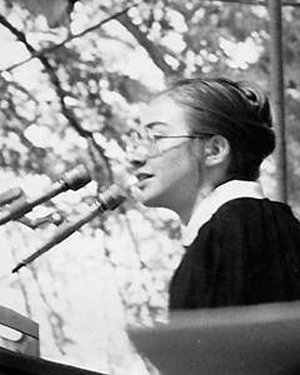
Hillary Rodham addressing the 1969 graduating class at Wellesley: "Fear is always with us but we just don't have time for it. Not now."
Clinton's friendly biographers, without being able to read the thesis in the 1990s, have downplayed the Alinsky connection. Judith Warner's "Hillary Clinton: The Inside Story" managed to describe the thesis without once mentioning Alinsky, whose name appears on every page. Gail Sheehy's "Hillary's Choice" gave the thesis a benign new title, “Aspect of the War on Poverty,” describing it as merely an examination of federal anti-poverty programs in Chicago.
In a 1993 interview with The Washington Post, about the time the Clinton health care plan was being formulated and the thesis was being sealed, the first lady characterized her college writing as an argument against big government, supporting Alinsky's criticism of the War on Poverty programs. “I basically argued that he was right,” she told the newspaper. “Even at that early stage I was against all these people who come up with these big government programs that were more supportive of bureaucracies than actually helpful to people. You know, I've been on this kick for 25 years.”
As news organizations are beginning their "scrubbing" of the 2008 candidates, and campaigns are digging for every scrap to use to their advantage, there is disagreement on what value should be placed on youthful writings.
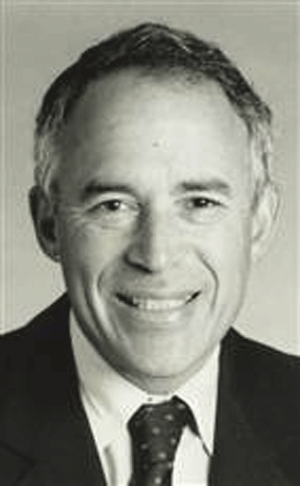
Professor Alan H. Schechter
Must Wellesley’s 2007 seniors scour their term papers on global warming for phrases that could derail their presidential ambitions in the year 2046?
Can a college research paper really be the Rosetta Stone to deciphering a candidate's politics or character?
“It's a moronic statement,” said Hillary Rodham's thesis adviser, Alan Schechter, now an emeritus professor at Wellesley, as well as a friend and campaign contributor to Sen. Clinton.
“The notion that a 21-year-old idealist somehow remains a 21-year-old idealist their whole life — she's not a radical at all. I think she's very mainstream. She's a pragmatist. She's a much more thoughtful, cautious, careful, pragmatic person — she's been burned so often.”
The makings of a campaign ad?
That doesn't mean, said the professor of political science, that we won't see an Alinsky-Clinton attack ad. One can envision black-and-white photos of Hillary Clinton and Saul Alinsky, wearing remarkably similar Coke-bottle glasses, while the words scroll by: "radical ... socialist? ... exceptional charm ... sealed in the archives...."
But at its heart, her mentor says, the Alinsky-socialist-Rodham connection is a falsehood. "My conclusion, she was already thinking in terms of practical politics, what works, what doesn't, more than on ideology," Schechter said. "She wouldn't have paid any attention to whether Alinsky was a Marxist.”
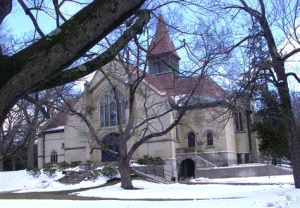
Wellesley College, a stop on the tour for Hillary Clinton researchers
Turning to an expert at using Alinsky's tactic -- picking a target, freezing it, personalizing it and polarizing it -- Chris Lacivita can also envision such an ad.
Lacivita co-produced the "Swift Boat" ads in the 2004 presidential race questioning Democratic Sen. John Kerry’s Vietnam service. He told MSNBC.com that no fact from a candidate's life is too old for negative advertising.
"I think the last election cycle proved that there's no statute of limitations," said the Republican political consultant. "What someone did or said 35 years ago is certainly fair game, especially if you're running for president of the United States.
"I have not read her research paper. Though I can assure you that I will very soon," Lacivita added with a laugh.
He began to brainstorm what such an ad might look like:
"You have to make it relevant to world events today.
"Maybe you look at the contrast. What year did Hillary write this paper? 1969.
"And where was John McCain in 1969? A POW in Vietnam."
